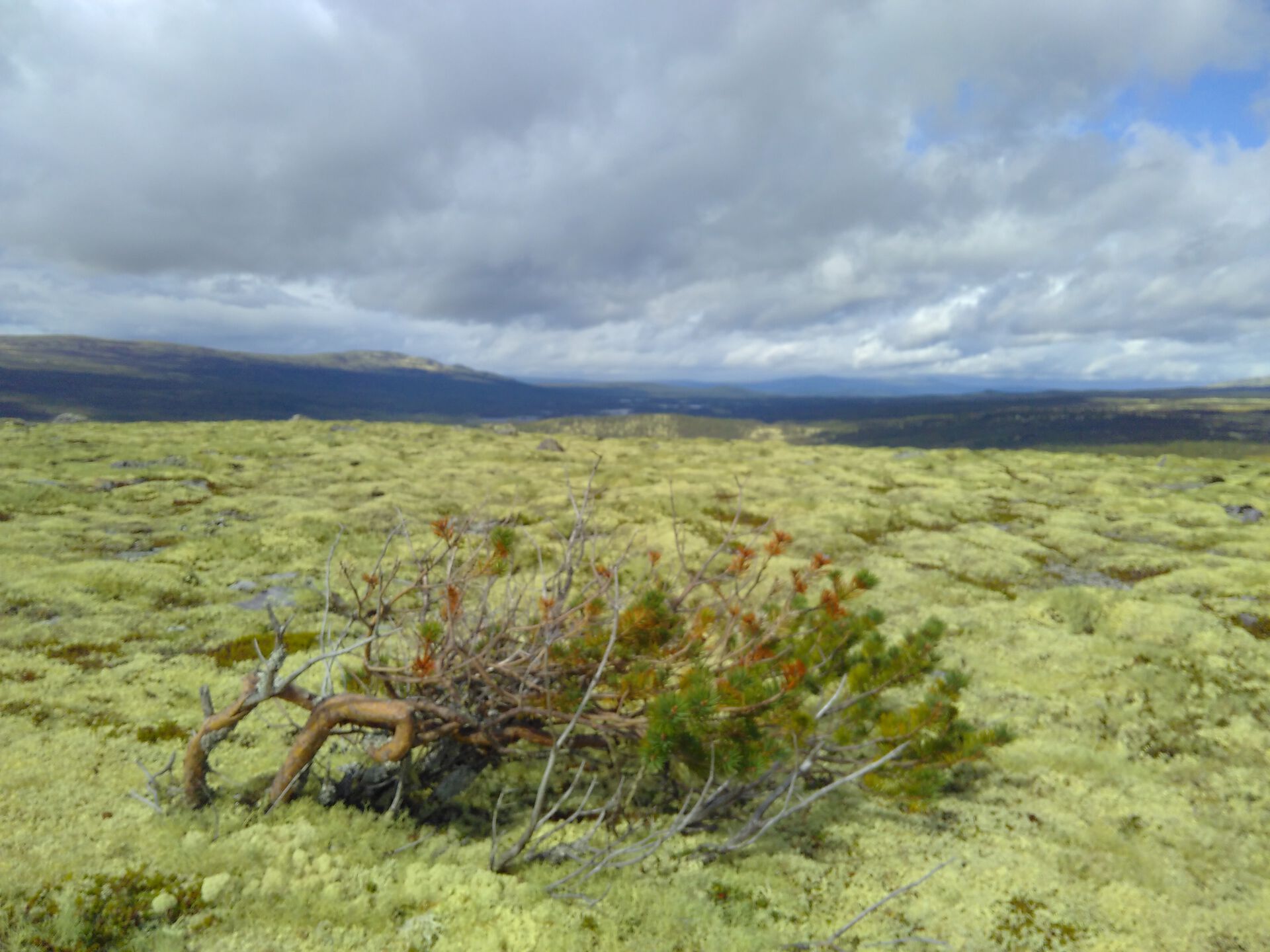Plants regulate the cycles of carbon and water, affect the composition of the atmosphere and how the landscape absorbs and reflects sunlight. As such, vegetation is not only shaped by climate, it also feeds back to the atmosphere and shapes the environment. An example of such feedbacks in the climate system is a change in the forest line due to climate change, which in turn affects the climate through changes in the reflection of solar radiation, For instance, if an ecosystem dominated by light lichen is replaced by darker spruce, i.e. the albedo (reflectance) changes. Other feedback cycles involve evapotranspiration, carbon sequestration and by influencing snow cover. Such feedbacks can be positive (enhances the climate change signal) or negative (counteracts the climate change signal).
EMERALD is an interdisciplinary, nationally coordinated project that integrates and strengthens research groups in Norway studying the role of vegetation in the climate system. The project aims to improve the understanding of ecosystem processes and their representation in global climate models, integrating knowledge and data gained from observations and experiments.
Focus is on boreal and Arctic ecosystems, such as evergreen trees, deciduous trees, shrubs, mosses and lichens. In EMERALD, researchers work interdisciplinary - across scientific fields and expertise to examine these complex ecosystems from different perspectives. The project provides added value through joint field work and experiments, and coordinated modeling work. The long-term goal is to improve the projections of climate change for our regions.

EMERALD works towards improving the land module (CLM) in the Norwegian earth system model (NorESM), integrating data and knowledge from field-based ecosystem research. In this way, the representation of vegetation and its interaction with the surroundings are improved. Implementation of small-scale structures in the landscape into the model are enabled through tiling. The development of a joint model platform, including a user-friendly interface for running CLM for selected sites, has facilitated a coordinated testing and development of the model for non-CLM experts. A web-based tutorial has also been created. Both the model and the tutorial is open-source (on GitHub). The platform is a key development within the project that constitutes the basis for further model development and testing, integrating across research groups working with models and field studies. It has been developed in close collaboration with the IT-group at the Department of Geosciences (UiO).
Field work and field experiments are located at Finse, Hedmark, coastal regions in western Norway, in Finnmark and on Svalbard, and is linked to existing projects and research infrastructure. The level of field activities were high during the summer 2020 despite necessary adjustments due to Covid19. Field observations contribute vital data for the development and testing of CLM and the model platform, including detailed information about key vegetation types typical for high latitudes (e.g. mosses and lichens), plant functional types that are not yet represented in the model. A series of sensitivity experiments are performed, studying the tolerant limits of plants to extreme conditions such as high/low temperatures and drought. Selected experiments are done in laboratories, both in Tromsø and Oslo, including measurements of plant traits, such as reflection of incoming solar radiation (albedo), photosynthesis and respiration, and hydrological processes in plants and soils.
EMERALD places large emphasis on disseminating research. Two main channels are financed by project funds. First, results are disseminated through the Norwegian Centre of Climate Services. The Centre arranged a user workshop in November 2019, where representatives of relevant stakeholders participated, namely reindeer husbandry, forestry and agriculture. Secondly, the research is disseminated through a temporary exhibition in the Climate House at the Natural History Museum (NHM) at Tøyen. The exhibition was originally planned towards the end of the project period, but we were invited to create the first temporary exhibition in a series. The Climate House, including our exhibition, was opened in June 2020. The work with our exhibition was led by Anders Bryn (NHM) with support from a number of enthusiastic researchers and communicators in EMERALD. The exhibition focuses on climate research, with particular emphasis on feedbacks between climate and vegetation. A copy of the exhibition will be displayed at the Norwegian Mountain Museum in Lom. Other museums have also expressed interest in the exhibition, so it will be on display in different parts of the country for several years to come.
Information about us:
- EMERALD on web: www.mn.uio.no/emerald
- Follow us on Twitter – EmeraldNorway